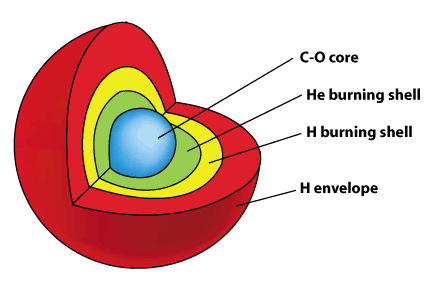
WR+O
Binary Stars

We obtain spectropolarimetric data using the Robert Stobie Spectrograph (RSS) on the Southern African Large Telescope (SALT)
What are
WR+O Binaries?
These systems consist of a Wolf-Rayet (WR) star, which is further classified as either a carbon or nitrogen type, and an O-type star. The two stars are in orbit around their centre of gravity. Wolf-Rayet stars are a group of massive, rare stars with unusual spectra showing broad emission lines of ionised helium, and either ionised carbon or nitrogen from which the star gets additional classification as either a WC star or a WN star. The system is also characterised by extremely high stellar winds, which serve to blow dust and gas around the star. The O-type star also has its own stellar winds, though they are lower in both density and velocity, and the interaction between these two stellar winds results in a wind-collision, or shock, region.
The goal is to understand how these WR+O systems exchange mass with one another, and in order to do that, it is necessary to study this shock region and the resulting light that is emitted. In order to do this, we use polarimetry: a technique in which the polarisation of the incoming light from the star system is measured. Polarisation is produced through electron scattering which occurs when light emitted from both the star and this shock region interacts with free electrons in the ionised winds. This causes the light to be scattered in a certain direction, gaining a certain amount of polarisation, which is dependent on the incoming and outgoing angle at which the light hits the free electrons. It is important to understand the polarisation of emitted light in order to build a geometric picture of the scattering region relative to the emission regions, and ultimately, how these two stars exchange matter with one another.
I have been working with Prof. Jennifer Hoffman and her team on this project. Specific systems I have studied include WR 30, WR 47 and WR 71. Recently, we have been creating new tools and methods to analyse the line profiles of our targets. I plan to write my undergraduate thesis on this material.
AGB Stars
Polarimetry of
R Doradus
R Doradus is a low-mass, M-type (oxygen-rich) AGB star. It is classified as a semiregular variable with subtype b and has a mass-loss rate of approximately 10^-7 solar masses per year. It is relatively nearby (60pc) which makes it a great candidate for polarimetric imaging.
Stars on the AGB experience significant mass loss through stellar winds, driven by pulsations of the star. Dust and gas is accelerated outwards into the circumstellar environment (CSE). Polarimetry is a valuable tool to probe this dusty outflow, to understand what drives this process and how these stars lose mass as they near the end of their lives.
During the summer of 2021, under the Chalmers Astrophysics Space and Science Summer (CASSUM) Research Fellowship, I worked with Dr. Theo Khouri to characterise this dusty outflow of R Doradus. The data consist of polarimetric images in various filters: V (0.55 microns), cntHa (0.65 microns), cnt748 (0.748 microns) and cnt820 (0.82 microns). We obtained several different epochs, though not consistently across all filters.
We have observed some strange dust formation in the polarised intensity images. We are now creating 3D Monte Carlo radiative transfer models to try and reproduce the scattering seen in our observations.
